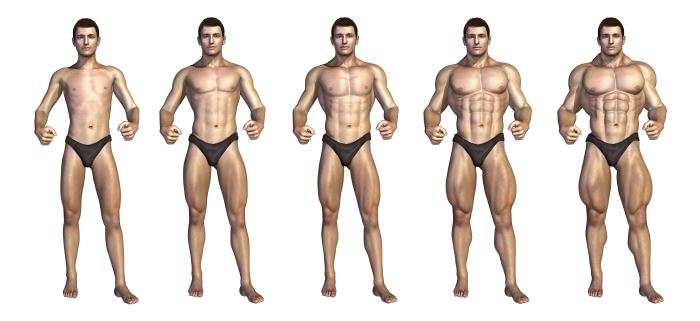

PROGRESSIVE OVERLOAD EXPLAINED FULL
Therefore, the moderate loads used for the backdown sets often feel much lighter than they would if heavier loads were not lifted prior – this is referred to as PAP (Post-Activation Potentiation).īackdown sets are a great way to add volume, work to a full range of motion (ROM) and practice technique.

Time/volume/Density (how much/how long) – reduced rest periods increase training density.īackdown sets are by far my favourite method of strength training and is an optimal way to include both heavy loads and high volume on the same movement.Ī backdown set is the term used for sets performed at a lighter weight after the initial sets at a heavier weight are completed.įor example, perform 3×3 at 90% (3 minutes rest between sets), followed by 3×8 at 70% (1-2 minutes rest between sets).Īlthough the previous heavy sets cause fatigue, they also potentiate the neuromuscular system (prime it).Therefore, we overload the body with stress to invoke adaptations, but we do this progressively (little by little) to ensure we don’t sustain injuries – progressive overload is fundamental to all training! We want to adapt and find things easier, but we also want to keep pushing forward without injury. This simply means that training needs to get progressively harder. The training principles overload and progression are combined to create the principle of Progressive Overload. Sufficient recovery isn’t allowed, then performance levels can be lost.

Reversibility: If stressors are taken away or if We need to overreach where possible to elicit the most results, but if we overreach too far and too often, we will over-train which can result in injuries and illness, etc. Performance and injury, we refer to it al maladaptive stress. If the overload is too great and results in regressions in Our bodies to elicit adaptations need to be progressive and gradually increasedĪ gradual increase in overload which is programmedĪccording to an individual’s ability level and various other factors is Progression: The additional stress which we put on Overload: In order to elicit adaptations, the body mustīe put under additional stress (overloaded). Therefore, we need to ensure our training is progressive and doesn’t plateau (cease improving). However, we must also consider the law of accommodation which states that our response to constant stress will decrease over time. Squats.Īdaptability: Over time the body becomes accustomed to the stress or stimuli it is exposed to and therefore, improves in a number of ways (specific to the stress). Invoke the adaptation of increased leg strength i.e. If we want stronger legs, then we need to impose a stress that will This principle underpins what we are trying to achieve with our This is oftenĭescribed as the SAID principle (Specific Adaptation to Imposed Demands), whichīasically states that the body adapts specifically to the stress you put it Makes will be specific to the stress or stimuli it is exposed to. Specificity: Any changes or adaptations the body Some need more volume while others need more intensity. Individuality: Everyone responds to trainingĭifferently. We call these advanced training techniques and not only will they mix things up, but they can also greatly increase the benefits of your training, helping you to break through barriers and smash plateaus! TRAINING PRINCIPLES Once we have decided on the basic training variables, there are many ways to make our training far more interesting. From there, we decide how we can organize the training variables to optimize the benefits. When it comes to programming, the first thing we have to do is consider the training principles.


 0 kommentar(er)
0 kommentar(er)
